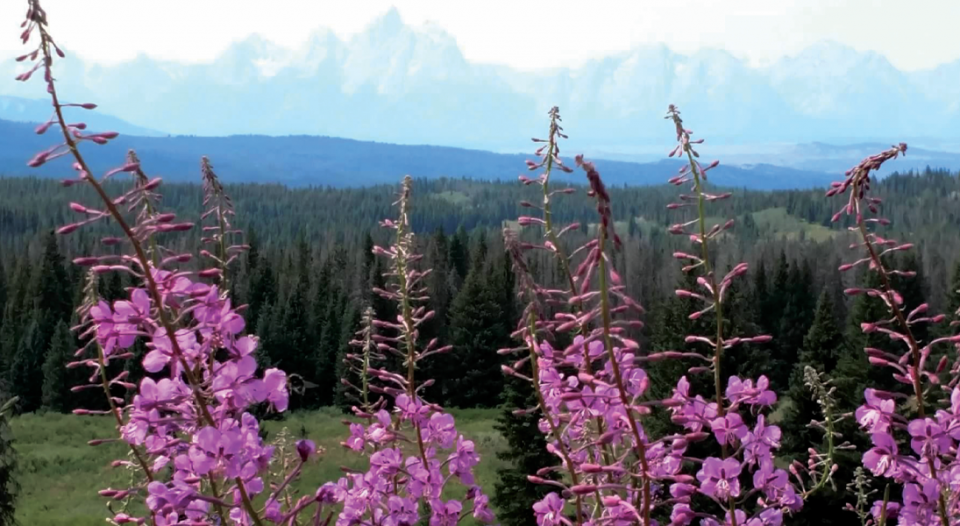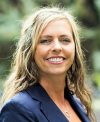It’s a sunny day in the Wind River Range of Wyoming. A group of Indigenous people and I form a circle to burn tobacco and offer a prayer of thanks to the Creator for the plants we’re gathering today. Once we pray and provide an offering to Mother Earth, we scatter across the wide-open space to dig up roots and collect berries.
For five years I’ve been listening, learning, collecting plants and building relationships with the Restoring Shoshone Ancestral Food Gathering (RSAFG) group from the Wind River Indian Reservation. I acknowledge them for allowing me to walk and work with them on ancestral lands. I acknowledge the homelands of the Shoshone, Cheyenne, Arapaho and Crow where I live and work.
I’m a white ELCA Lutheran colonial settler. I grew up in the church, formed by Sunday school, choir, confirmation, youth group and worship. My husband is a pastor, so our family is enmeshed in church activities. I’m also a scientist and academic, which adds further layers of privilege.
These two paths were interwoven in me, though I never recognized them as one.
Many years ago, a colleague told me they couldn’t participate in Native American ceremonies or “smudging” at a health event because they believed those practices were pagan. They considered their faith separate from these ceremonies. I didn’t see these ceremonies as pagan, but for many years I never connected my work with Indigenous partners to my faith.
My spirituality grew when I started teaching nutrition at a tribal college, where I experienced a culturally rich and faithful environment. Meetings began with prayer. Every ceremony incorporated songs and drums to honor the Creator. In my work with the RSAFG, my emotional and spiritual connection to the earth was enhanced by our prayers and offerings for the harvest and working in the fields and mountains. We talked and laughed and built relationships while working in harmony with Mother Earth.
Then I would drive home, off the reservation. On Sunday, I would worship at my Lutheran church. I loved the Scripture, liturgy, singing and fellowship. These two paths were interwoven in me, though I never recognized them as one.
Authentic partnership
This cultural dichotomy—walking alongside and collaborating with Indigenous partners while commuting to a much different environment that separated our experiences even more—was fraught with emotional challenges. I sought to be an ally and still do, but I can’t reach this goal on my own. It requires the forgiveness of my Indigenous partners. All I can do is try constantly to question my assumptions and learn, and to face the ways I’ve benefited from the destructive history and current impacts of colonialism.
To deepen and widen our perspectives, we must learn and acknowledge Indigenous history, read and listen to their voices, authors and scholars, and strive to address health disparities. But that work doesn’t hold the same experiential value as being present, listening, learning and building relationships with community members.
Several passages from Robin Wall Kimmerer’s Braiding Sweetgrass: Indigenous Wisdom, Scientific Knowledge, and the Teachings of Plants (Milkweed Editions, 2020) resonated deeply for me. Her writing about the gifts of the land and the connections between all living beings revealed a path where my faith and work could come together. I found answers to questions I didn’t know I had.
Did I see plant-collecting ceremonies and relationship-building as part of my Lutheran faith? Were the prayers to the Creator or to God—or are they the same? Why did my faith and thoughts about God seem separate from my experiences in Indigenous communities? How was my faith entwined with building authentic partnerships? Could I recognize the power I had from being white, Lutheran and an academic? How could I recognize my privilege and use it to be a better ally?
My Lutheran faith is now interwoven with my relationships and accompaniment with Indigenous partners.
These were, and continue to be, difficult questions. The visceral struggle and emotion that came with discerning these questions, navigating my response and accompanying Indigenous partners required me to break down self-made barriers between work and faith, to embrace the two paths as one.
Free of my barriers, I find that the Indigenous practices of recognizing the Creator in all things and of giving thanks to Mother Earth for that which sustains us have made my faith more authentic. I feel connected to God when I’m part of an Indigenous ceremony. God is present in the wind and water, the plants and trees, and the relationships between human and nonhuman aspects of the world. The true grace of God and of living in connection with Jesus is lived out in my thoughts and experiences with the Creator and Mother Earth. They aren’t separate.
My Lutheran faith is now interwoven with my relationships and accompaniment with Indigenous partners to restore healthy ancestral foods to their diet and to play a small part in decolonization. In these relationships, “listening, standing witness, creates an openness to the world in which the boundaries between us can dissolve in a raindrop,” Kimmerer writes.
In her book, Kimmerer writes about leaving the shore to dig around in the water and muck for cattails. I’ve dug cattails on the ancestral lands of the Shoshone people when gathering plants with them. We work alongside each other to reclaim and decolonize, to build relationships with each other and the earth. “Transformation is not accomplished by tentative wading at the edge,” Kimmerer writes. For me, that has been exponentially true, not only in cattail-digging but also in striving for authentic partnership and in my relationship with God, Creator.
Find more information about the Restoring Shoshone Ancestral Food Gathering and the collaborative effort to reclaim ancestral foods.





